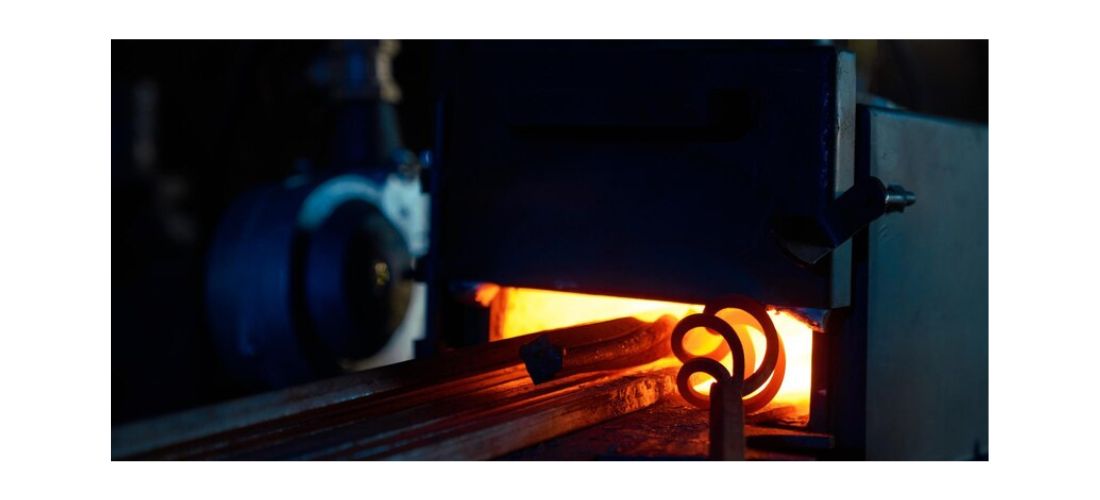Blog
Closed Die Forging Advantages and Disadvantages
Closed die forging is one of the strongest metallurgical processes that provides the shape of a workpiece by squeezing between two hardened steel dies. The process offers tremendous force while squeezing metals to the needed shape with the best mechanical properties and accuracy. What is discussed in this blog post will give the reader adequate information about the closed die forging advantages and disadvantages.
Closed Die Forging Advantages
Closed die forging is a highly efficient manufacturing process known for its precision and strength. In this blog, we delve into its key advantages, highlighting why it’s a preferred choice in various industries.
1. Higher Strength and Elongation at Break
In addition to a high level of toughness, with finer size, the grains give closed die forging high strength as well as elongation strength. Material grains get aligned in the process due to high pressure and plastic deformation, including the removal of interior defects from the material.
It is used in aerospace and defense sectors, which bear an exceptional load-carrying capability of fatigue and resistances, and, more importantly, it exemplifies an advanced level of impact loads.
2. Greater Dimensional Stability and Reproducibility
Closed die Forging has provided an exceptional Dimensional accuracy that can be almost similar to an 'exact match.' High-dimensional accuracies have facilitated considerable secondary operations on similar kinds of parts. It can result in almost NIL.
A lot of dimensional accuracy provides high production efficiency along with lower scrap rates.
3. Higher Material Yield
Closed die forging provides more yield than many other processes that involve machining.
This process will impart the desired shape to the metal with the minimum removal of materials. Hence, a highly reduced amount of raw material is consumed, which eventually saves money.
4. Optimized Surface Finish
It is not as good as that obtained on the machine surface, but closed die forging is sufficient enough to achieve an average-quality surface finish. Secondary finishing operations such as grinding or polishing can improve it further.
However, the inherent quality of surface finish in forgings normally kills the necessity for heavy finishing, resulting in savings in production time and cost.
5. Improved Fatigue Life
Grain flow and internal structure of forged components have been tailored to yield maximum fatigue life. This aspect is vital in products like engine components, connecting rods, and other gears that generally undergo cyclic loads.
Increased levels of fatigue resistance of forged products increase their reliability, thereby increasing their service life.
6. Versatility
Closed die forging is the most flexible type of process; it brings all the diversified shapes and sizes. This process can obtain geometries, which can be simple to complex ones.
Closed die forging is considered to be among the major properties that any industrial manufacturer will obtain in any domain.
7. High Initial Investment for Tooling
The closed die forging process has a very high initial tooling cost, but it saves a lot in the mass production of the components. There is a great deal of material saving and overall automation, resulting in a cost-per-part reduction.
Improved mechanical properties of forged parts typically compensate for the need for any expensive secondary operation or redesigning of the material.
Closed Die Forging Disadvantages
While closed die forging offers exceptional precision and strength, it also comes with certain limitations. In this blog, we explore the key disadvantages of this forging method to provide a balanced understanding of its applications.
1. High Tooling Costs
The major limitation of closed-die forging is that it involves very high tooling costs for designing and manufacturing dies. The dies are complex tools that require very accurate machining. Heat treatment of the dies is required sometimes also.
This extremely high investment at first makes closed die forging best suited for extremely large production runs.
2. Design Flexibility is Limited
Although flexible, closed die forging is somewhat rigid by design. The process is not well suited for creating complex shapes with intricate details.
This may compromise the degree of design flexibility and even necessitate design changes to accommodate the forging process.
3. Likelihood of Surface Defects
Forgings are typically very good but commonly suffer a few surface defects, including flash, die marks, or laps.
Some of the surface imperfections can be finished in work to attain the quality needed by the surface.
4. Environmental Factors
The closed die forging operation is noisy, and it generates particulate material; it will be a means of environmental risk.
Methods for noise and dust control should be followed to minimize the effect of environmental disturbances on the operation.
5. Risks in safety
Closed die forging requires very high temperatures and high machines and hence will accompany some risks to safety.
Regarding the above process, safety gear and equipment and the required tools must be used for accident prevention and injury prevention.
Applications of Closed Die Forging
Automotive: Automotive forging parts of the engines (crankshaft, connecting rods, pistons), axle beam, shaft adapter, end yoke, automotive bracket, sliding sleeve, collector ring, parts of suspension, steering parts, transmission gears.
Aerospace: Aircraft landing gear, turbine blades, fasteners
Defense: Ammunition parts, armor steel, rifle steel
General Engineering: General industrial machinery and parts, as well as general construction machinery, parts, and general agricultural parts.
Conclusion
Closed die forging is the very first of such important manufacturing processes that are highly strength and dimensionally accurate in addition to their ability to use the material with maximum capacity. However, such a process, as above, is characterized by a few disadvantages, such as investment in tooling at a very costly price and less design flexibility. Manufacturers may, therefore, check if such a process would work for them by comparing the closed die forging advantages and disadvantages.
Read more: Difference Between Open Die Forging and Closed Die Forging

